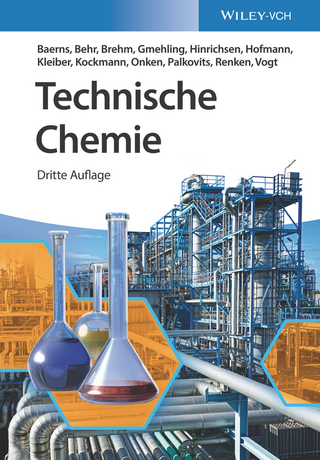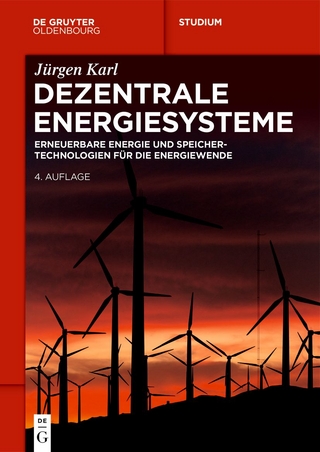
Chemistry Solutions to Challenges in the Petroleum Industry
Oxford University Press Inc (Verlag)
978-0-8412-3459-8 (ISBN)
Despite the continued growth of oil production, operational challenges persist throughout the industry. Curated by well-known experts in the production and refining of oil, this book examines the ways in which chemists are helping the petroleum industry to produce, transport, and refine products more efficiently and sustainably. Engineers, researchers, and students will find this book useful.
Parviz Rahimi obtained his Ph.D. in Chemistry from the University of Alberta in 1980 and joined Natural Resources Canada in 1981. He worked as a senior research scientist in the primary upgrading division of the CanmetENERGY in Edmonton. He has developed expertise in partial upgrading technologies applying processing chemistry for better understanding of viscosity reduction during thermal conversion of heavy oils and bitumen to reduce or eliminate diluent requirement for pipeline transportation. His research activities also include fouling and corrosion related to bitumen processing. He is an adjunct professor at the University of Alberta and industrial advisor to students at the Chemical and Material Engineering department. He has published more than 50 journal publications and four book chapters, and has made more than 60 presentations at technical conferences. Cesar Ovalles graduated with a licentiate degree in Chemistry from Simon Bolivar University and a Ph.D. in Chemistry from Texas A&M University. Right after graduation, he entered the R&D branch of Petroleos de Venezuela, where he worked for 16 years. In 2006, he joined Chevron, where he has been involved in the areas of heavy and extra heavy crude oil characterization and upgrading. He has published 57 papers in peer-reviewed scientific journals and has been awarded 16 patents. He has also presented 111 papers at scientific and technical conferences. Yunlong Zhang obtained his Ph.D. in Physical Organic Chemistry from The Ohio State University in 2010. After completing postdoctoral training at Massachusetts Institute of Technology, he joined ExxonMobil Research and Engineering in 2014 as a research scientist. Since then, he has been involved in research on characterization of molecular structures and reaction mechanisms in hydroprocessing of heavy oils and asphaltenes. His research has resulted in more than 30 publications, over 20 technical presentations, and several patents. Jeramie Adams received his Ph.D. from the University of Wyoming in 2008 in Inorganic Chemistry focusing on self-assembled supramolecular structures, carborane chemistry, inorganic photochemistry, exotic phosphorous ligand synthesis, and organometallics. He continued at the University of Wyoming as a postdoctoral researcher for nearly four years pursuing organometallic design for hydrocarbon conversion and inorganic photochemistry focused on the development of highly oxidizing excited state complexes. He joined the Western Research Institute in 2012 and has worked extensively in the areas of asphaltene adsorption, emulsion, and heat exchanger fouling. He has managed consortiums in the area of heavy oil, asphalt, and most recently carbon fiber. A key goal in his research has been to link the chemistry of hydrocarbon materials to their physical properties and how they behave in certain processes or to produce advanced carbon materials. In the last three years, Jeramie has branched out into the chemistry of coal-derived liquids and is currently the Program Manager for Hydrocarbons at the Western Research Institute and an adjunct professor at the University of Wyoming.
Preface
Upstream Treatments for Improved Production
Chapter 1: From Design to Practice: Development of New Acid Platforms To Address Upstream Oil and Gas Production Challenges, Amy J. Cairns, Katherine L. Hull, and Mohammed Sayed
Chapter 2: Advantages of Using a Microemulsion To Remove Crude Oil Residue from Solid Surfaces , Helen W. Hernandez, Alyssa Perrard, Eleazar Mendoza Gonzalez, Wesley Ehlert, and Siwar Trabelsi
Asphaltenes Implication in the Petroleum Industry
Chapter 3: Similarities in Diverse Polycyclic Aromatic Hydrocarbons of Asphaltenes and Heavy Oils Revealed by Noncontact Atomic Force Microscopy: Aromaticity, Bonding, and Implications for Reactivity, Yunlong Zhang
Chapter 4: Ultra-Small-Angle X-Ray Scattering as a Probe of Petroleum Heterogeneities from the Nano- to the Macroscale, Michael P. Hoepfner and Yuan Yang
Chapter 5: The Quantum Mechanics of Asphaltene Aggregation, Michael E. Moir
Heavy Oils/Bitumen and Crude Oil Refinery Processing Issues
Chapter 6: Viscosity of Canadian Oilsands Bitumen and Its Modification by Thermal Conversion, Kaushik Sivaramakrishnan, Arno de Klerk, and Vinay Prasad
Chapter 7: The Role of Compatibility in Determining the Blending and Processing of Crude Oils, E. Rogel, K. Hench, P. Hajdu, and H. Ingham
Chapter 8: Properties of Canadian Bitumen and Bitumen-Derived Crudes, and Their Impacts on Refinery Processing, Parviz Rahimi
Detection and Removal of Contaminants during Petroleum Processing
Chapter 9: Soft X-ray Characterization of Sulfur-Poisoned Cation-Exchanged Pt/KL Catalysts for Aromatization of Hexane, Michela Martinelli, Mohammad Mehrbod, Uschi M. Graham, Yongfeng Hu, Muthu K. Gnanamani, and Gary Jacobs
Chapter 10: Nitrogen Speciation: Application to Reactivity of Feeds to Hydroprocessing and Catalyst Deactivation, Cesar Ovalles, Estrella Rogel, Matthew Hurt, Viorel Duma, Harris Morazan, Kyle Hench, and Michael E. Moir
Chapter 11: Total Chloride Analysis in Petroleum C 11. rude Samples: Challenges and Opportunities, Moumita Dutta, Annie Pathiparampil, Deanna Quon, Jimmy Tan, Laura Poirier, Lidia Berhane, and Francisco Lopez-Linares
Chapter 12: Characterization of Nonmetal Chloride Salts and Their Removal from Crude Oil, Ken G. Huang and Yaya A. Zhu
Chapter 13: Characteristics of Morphology and Mobility of Iron Species on Iron-Poisoned Fluid Catalytic Cracking Catalyst Particles, Fei Ren, Yuxia Zhu, Qianqian Liu, and Haoming Wu
Editor's Biographies
Indexes
Author Index
Subject Index
| Erscheinungsdatum | 02.12.2019 |
|---|---|
| Reihe/Serie | ACS Symposium Series |
| Verlagsort | New York |
| Sprache | englisch |
| Maße | 182 x 261 mm |
| Gewicht | 956 g |
| Themenwelt | Naturwissenschaften ► Chemie ► Technische Chemie |
| Technik ► Elektrotechnik / Energietechnik | |
| ISBN-10 | 0-8412-3459-0 / 0841234590 |
| ISBN-13 | 978-0-8412-3459-8 / 9780841234598 |
| Zustand | Neuware |
| Haben Sie eine Frage zum Produkt? |
aus dem Bereich


